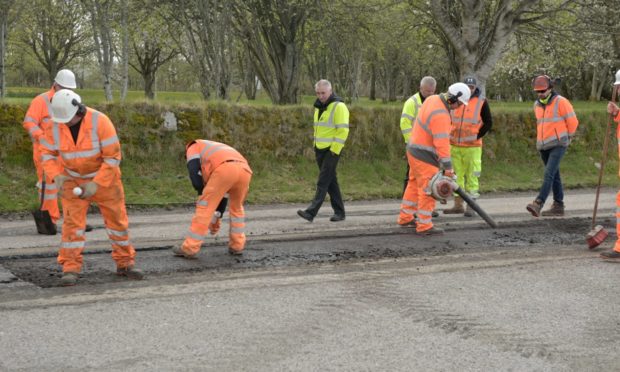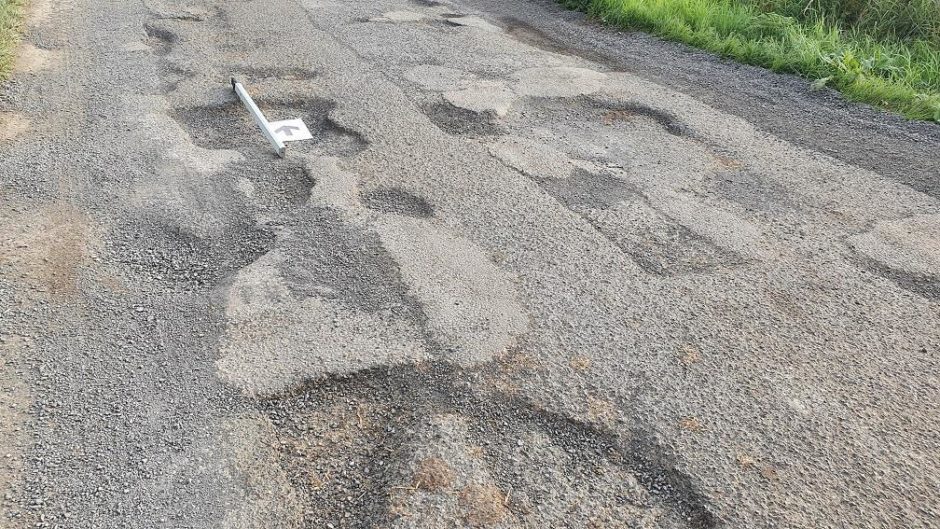Highland Council’s roads recovery programme took a leap forward as members welcomed positive progress for a multi-million pound investment.
The council had previously agreed a £20m cash injection to tackle the crumbling roads across the Highlands.
Today, members of the economy and infrastructure committee agreed a further £9m of capital from the Health and Prosperity Strategy.
The debate was positive, with members commenting on progress in reversing years of under-investment.
An end to cold tar repairs?
Tain councillor Derek Louden sounded a particular note of optimism when he spoke about infrared road repair (IRR).
Current pothole repair methods rely on cold tar – which tends to break up very quickly – or on the delivery of hot materials to site, which relies on the availability of expensive specialist kit.
With IRR, the temperature can be more easily controlled for a better repair and the kit can fit on a transit van.
“Both the roads team leaders in Tain and Easter Ross are highlighting the success of infrared repairs in delivering low cost and durable pothole repairs,” said Mr Louden.
“Repairs that were done over six years ago are still in good condition now. This would make a welcome change to cold-tar repairs which are back out as soon as they are filled in.”
The money is in place
Infrared technology could form one element of the council’s £2.5m investment in plant and machinery across the next two financial years. This money has been allocated from the council’s health and prosperity fund, which seeks to kickstart the post-covid economic recovery.
The council has already spent £1m on five new JCB Pothole Pro plant vehicles and £0.5m on five new tractor and flail sets, one for each Highland area.
Mr Louden wants his area’s share of the remaining £1m to go on IRR.
“We hope to see our share of the remaining £1m capital spend going on this technology to make sure the public gets the value for money and long-lasting repairs they have a right to expect,” he said.
“Our roads team will deliver – but we have to give them the tools to do the job.
“Infrared is what they need. Let’s get this to them and fix our roads.”
Good news for the rural Highlands
Elsewere in the debate, members welcomed the positive progress in addressing the rural roads network in particular.
The council is investing £6.5m in infrastructure improvements including passing places and the widening of roads at key pinch points. Each area of Highland will be given a share of the fund based on its road length and condition.
The report to committee also included details of the Highland Roads Improvement Strategy and Scottish Timber Transport Schemes, which look at how to mitigate the damage caused by heavy industrial vehicles on rural roads.
Sutherland councillor Hugh Morrison welcomed this focus.
“Living in a rural area, there’s lots of good news here,” he said. “Our roads weren’t built to take the size of vehicles we’re inundated with now.
“The news about extending the length of passing places is really welcome especially with the North Coast 500. A lot of the issues now are caused by frustration in not being able to get past a campervan that’s going at 50mph. This report shows we’re going in the right direction.”

